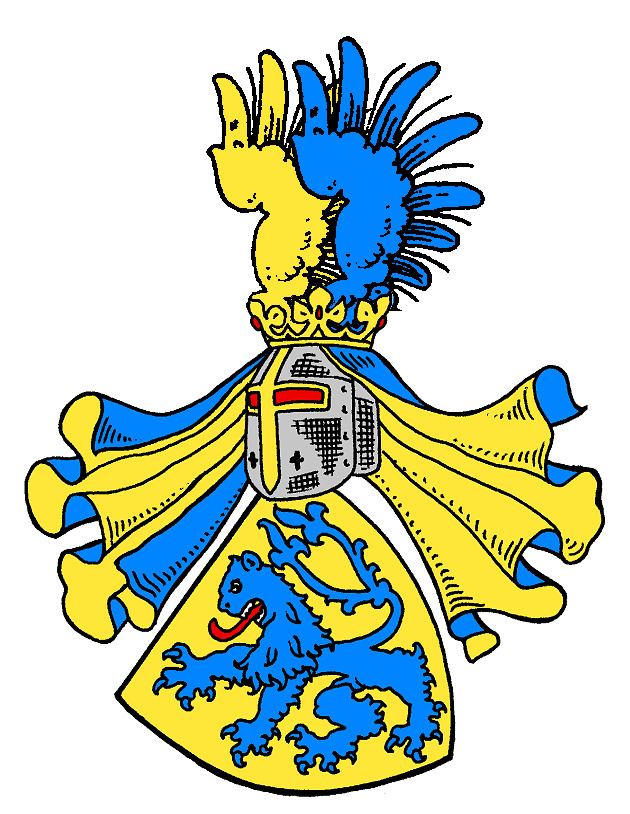 | ||
The House of Waldstein (Czech: Valdštejnové) is a Bohemian noble family, named after Valdštejn Castle near Turnov. The family's most famous members include Albrecht von Wallenstein, the Imperial general during the Thirty Years' War, and Ferdinand Ernst von Waldstein, a statesman and early patron of Ludwig van Beethoven.
Contents
History
The Waldstein noble family originated from the medieval Markvartici clan, which gained influence at the Přemyslid court in Prague under King Ottokar II of Bohemia. From about 1260, Burgrave Jaroslav of Hruštice (1234–1269) had Valdštejn Castle erected. His son Zdeněk was the first documented "Lord of Valdštejn"; allegedly he accompanied King Ottokar II on his Prussian crusade. Upon his death, his possessions were divided among his numerous descendants.
The Waldsteins again appeared in public life from the 15th century onwards. Formerly a poor and less significant family, they gradually acquired large properties in the territory of the Crown of Bohemia (especially in Bohemia and Moravia), received prominent positions and – since the 17th century onward – produced many statesmen and civil servants. Albrecht von Wallenstein himself came from a modest cadet branch which since 1548 held the small estate of Heřmanice. After the 1620 Battle of White Mountain, he purchased several confiscated lordships of his Protestant relatives. In 1628, he was one of the first among the Bohemian nobility to be promoted to Graf (count) status, then to Reichsgraf (imperial count) two years later.
After uniting with the extinct line of another Bohemian noble family, the Lords of Vartenberk (German: Wartenberg), the present family title since 1758 is "Count of Waldstein, Lord of Wartenberg". After World War II, the Waldsteins, then almost completely Germanized, were expelled from Czechoslovakia and their possessions were seized. They then moved to Salzburg and Vienna in Austria, where parts of the family live to this day, but others returned to Bohemia.
Possessions
Valdštejn Castle was the historical main seat of the family until 1821. In 1582, they purchased the lands of the secularized monastery of Třebíč. Mnichovo Hradiště Castle was acquired by Wallenstein in 1623. He was buried there and it remained in his family until expropriation in 1945; so did Wallenstein's Prague city palace, Wallenstein Palace. In 1622, he had also purchased the lordship of Bělá pod Bezdězem, which was owned by the family until 1945. Duchcov Chateau passed into the family by inheritance from the House of Lobkowicz in 1642, together with Horní Litvinov, Dolní Litvinov and Dolní Jiřetín, and the Duchcov branch kept it until 1921. In 1945, all properties in Czechoslovakia were confiscated. In the same year, however, a branch of the Waldstein-Wartenberg family inherited Karlslust Castle near Hardegg in Austria, together with Burgruine Kaja and the estate of Niederfladnitz, all located directly at the Czech border and still today owned by the family.
